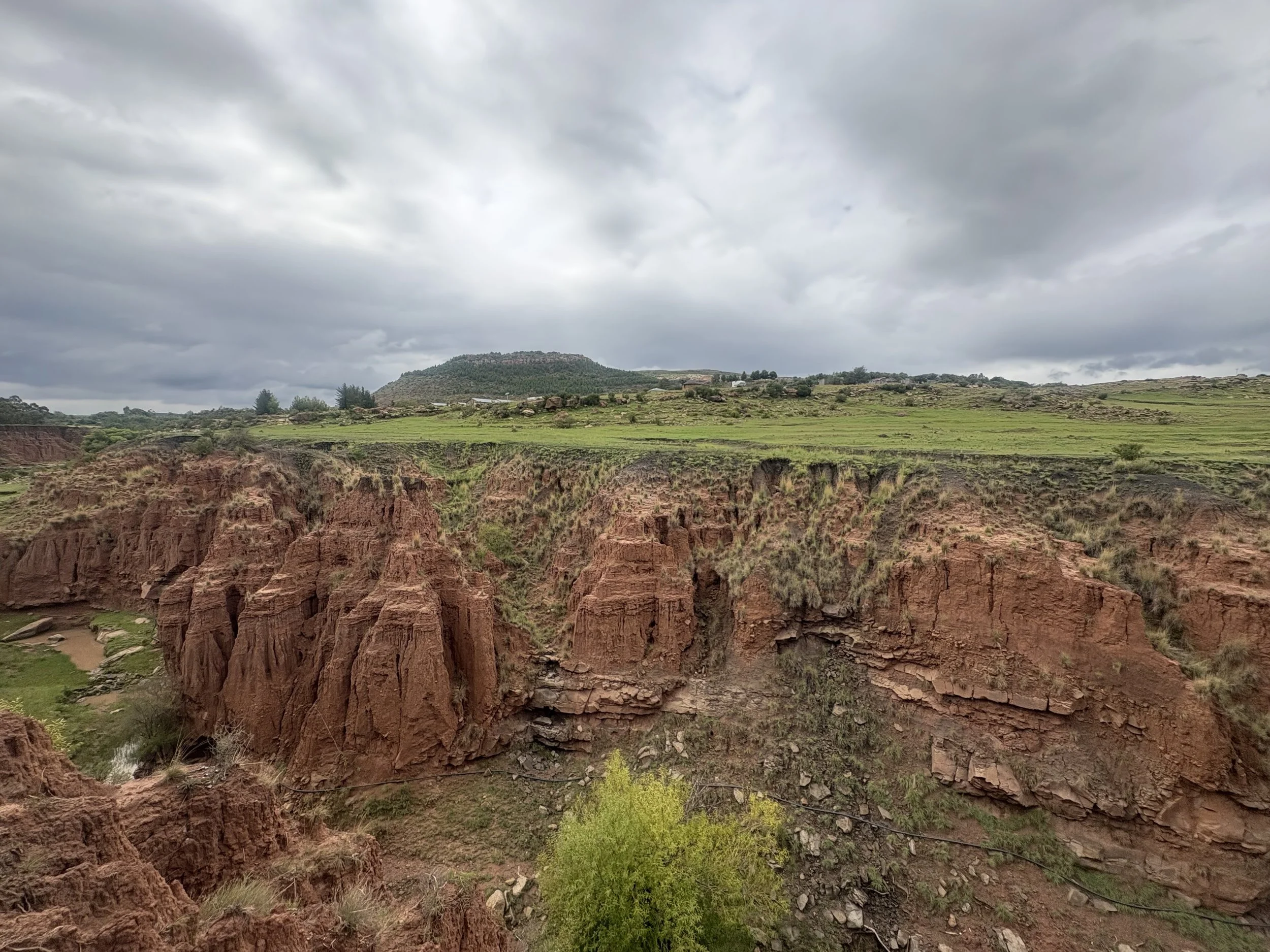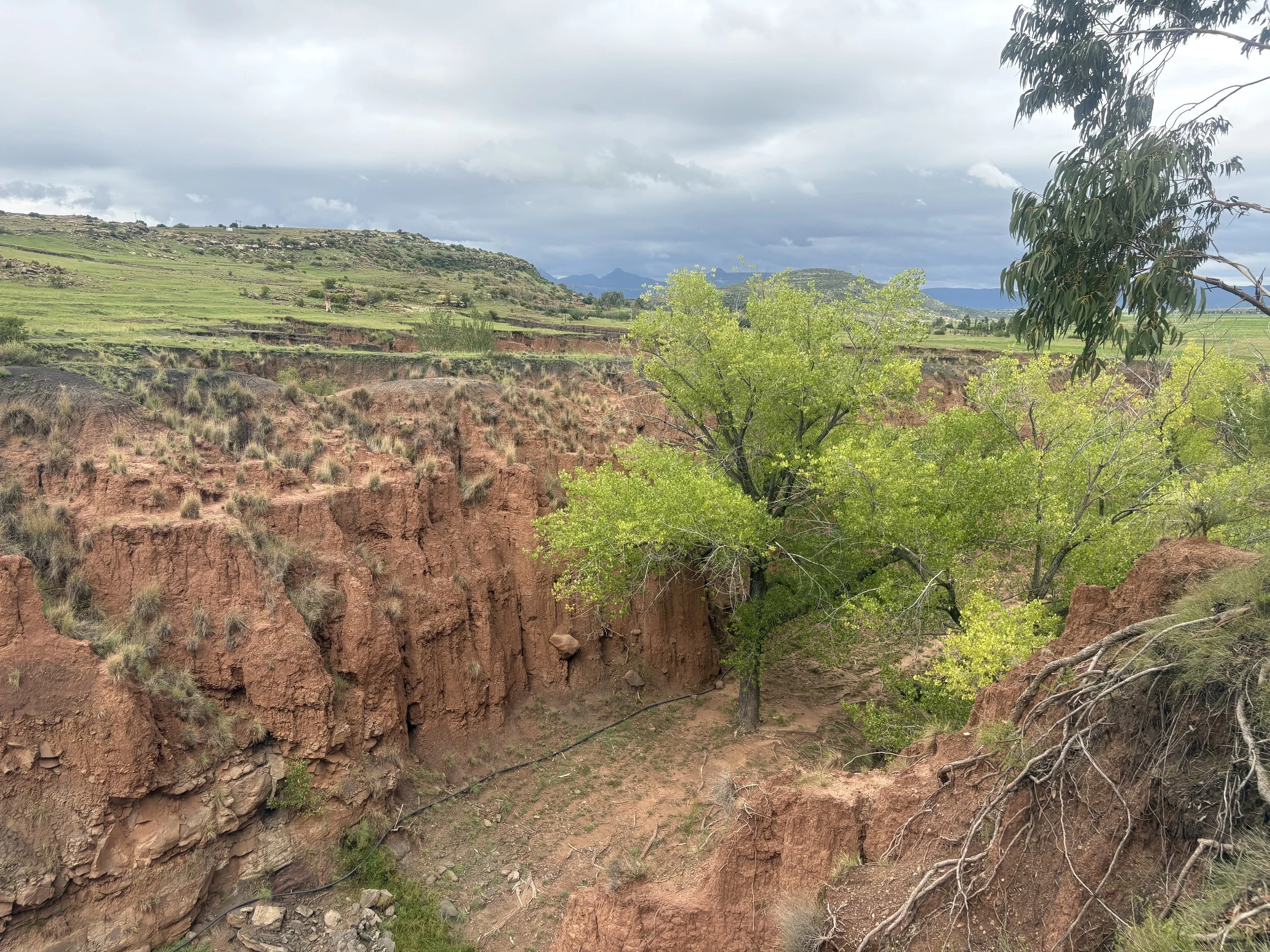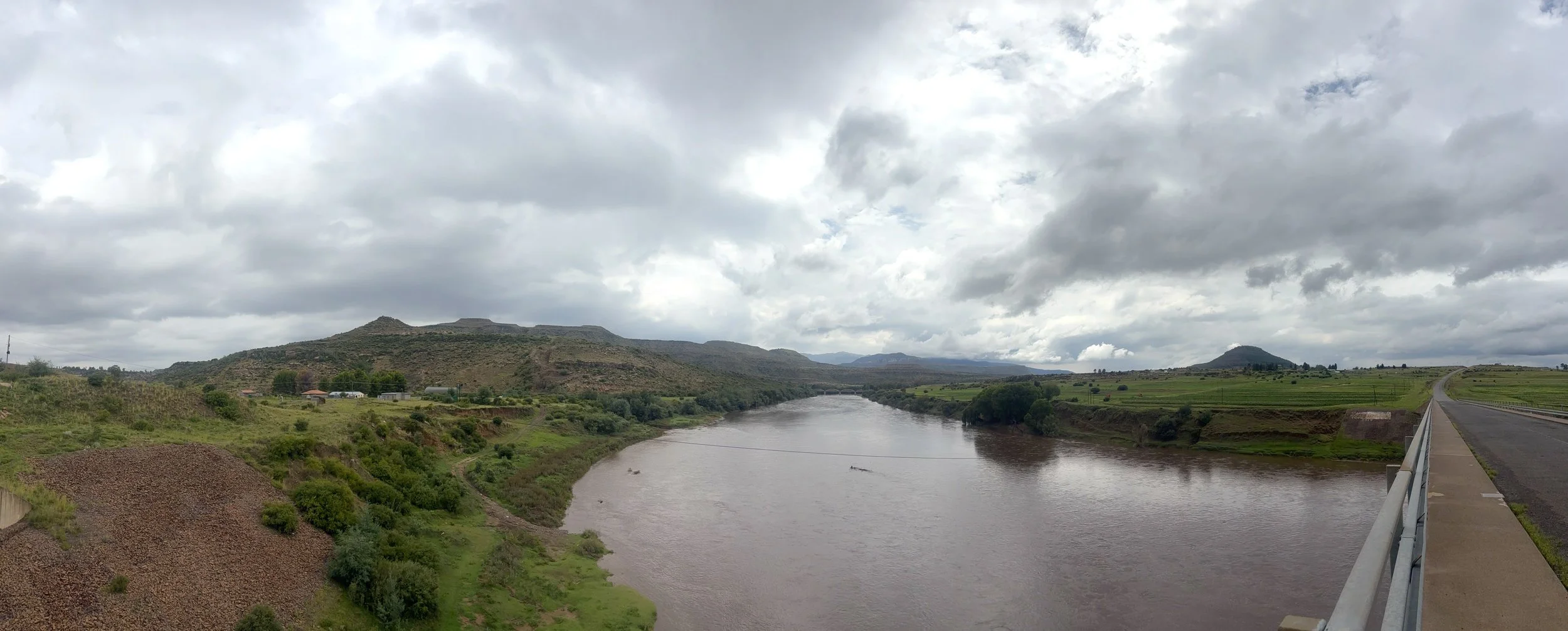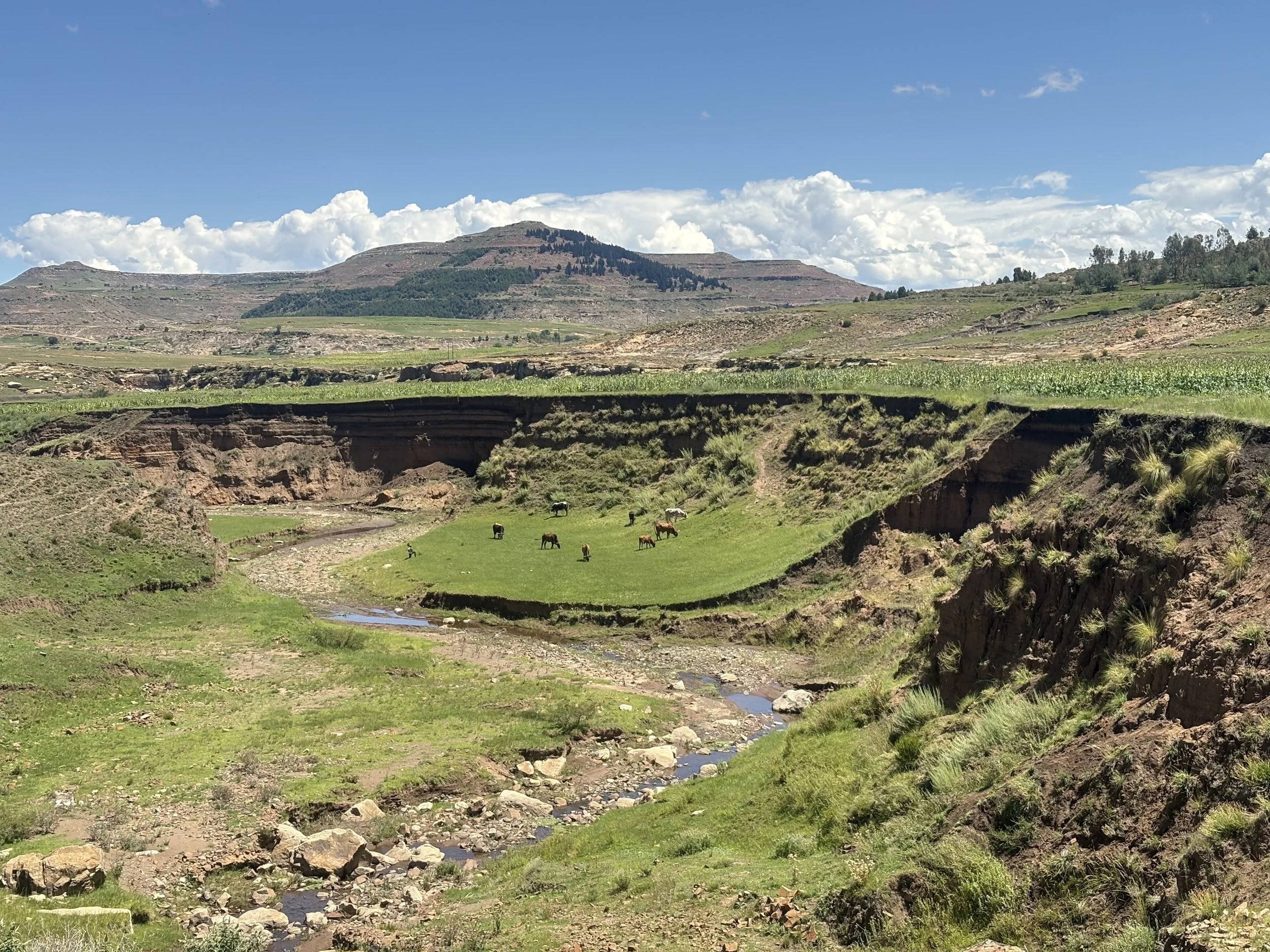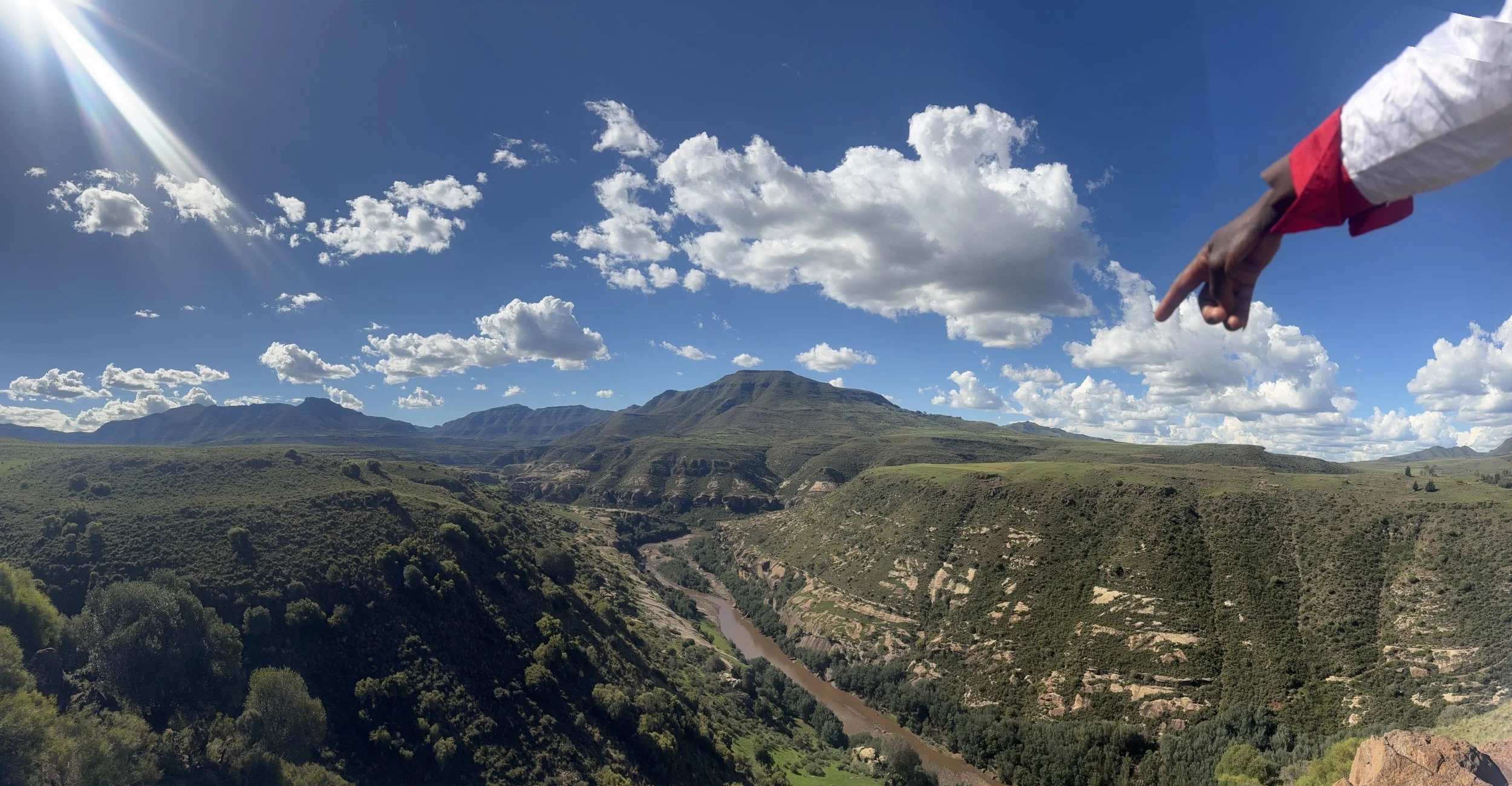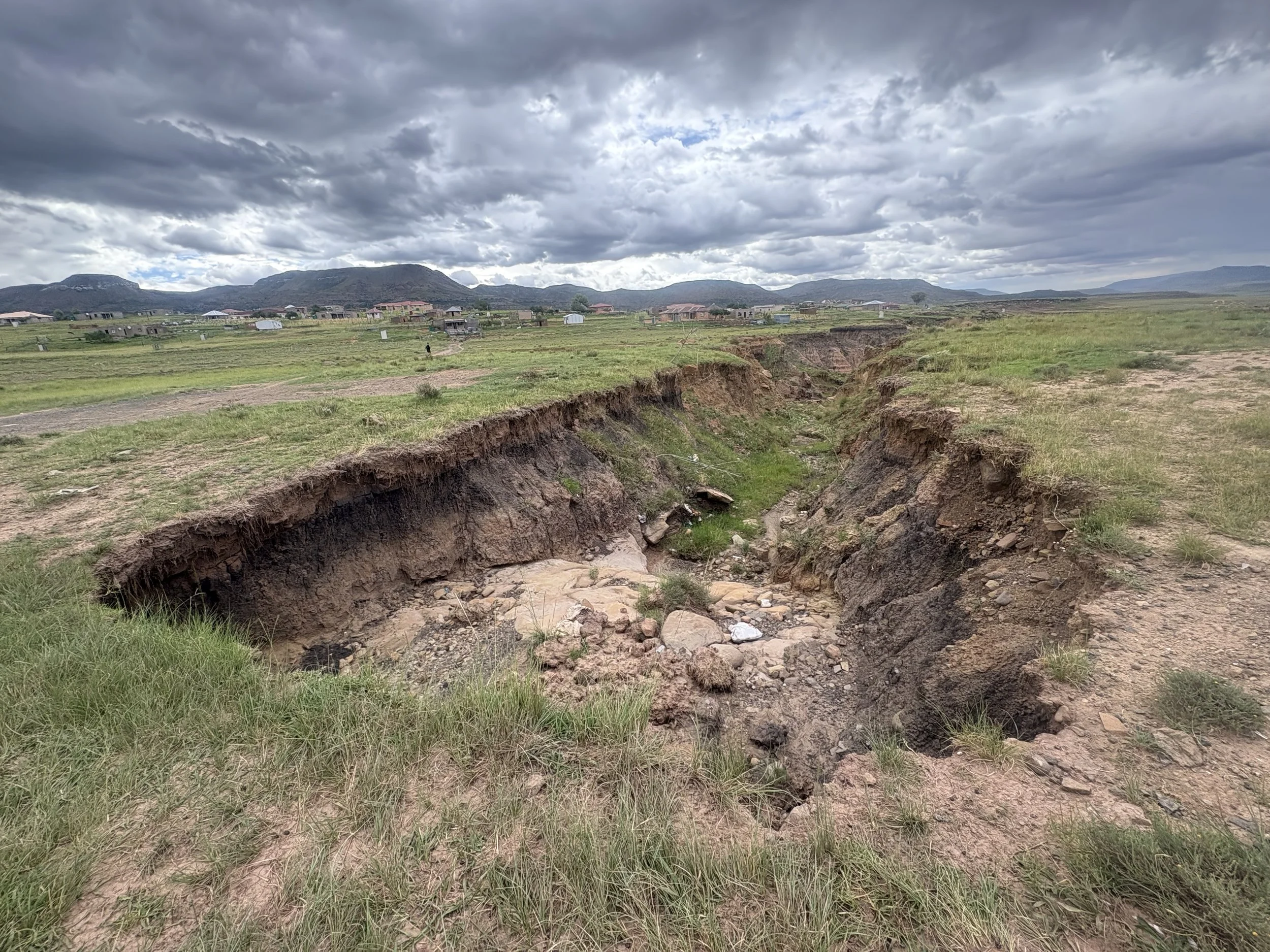
Agent Orange
27 February 2025
The foothills of south-western Lesotho are like a burn victim who has barely survived their injuries. It’s as if they’ve been doused with napalm. The once plump, glowing skin of soil and grass is reduced to scar tissue, drum-tight over the jutting sandstone bones beneath. The wound is trying to heal, but the keloid scars of erosion gullies can’t close.
This is a full-body wound. It stretches as far as the eye can see along the two-hour drive from Sterkspruit on the South African side of the Telle Bridge border with Lesotho, and reaches deep into the mountain kingdom’s lowlands.
Are the notoriously overgrazed Lesotho mountains a case of the tragedy of the commons, where too many people selfishly plunder the commonage, taking more than their fair share? Or is the tragedy in the capturing of the commons, where the powerful elite in a society are able to claim large parts of the commonage for themselves, pressing more and more commoners onto smaller parcels of land?
The method of capture could be the notion of a title deed, defended with fences and brute force, or the construction of a nation state that throws a hard political border across grasslands where herders had long moved their animals between summer and winter pastures.
When a culture, whose economy has been built on each family having a small herd or flock, is crowded into shrinking areas of land, what is left of the commonage? How much can that shared grazing be expected to support all those families? What does this mean for a single community — like South Africa’s apartheid-era tribal lands or Bantustans — or a nation state such as Lesotho which is now ring-fenced by a hard border and whose land practices are shaped by how the landlocked country has integrated into South Africa’s stronger economy.
It’s hard to imagine that the villagers whose homes dot the Lesotho landscape amidst neat rows of summer maize and sorghum can feed themselves from such excoriated land. The “agent orange” in this case is decades of economic and political forces, steamrolling over older customary practices of land custodianship, to produce a poisonous mix that has stripped once-healthy rangelands to the bone.
An erosion gully near Quthing in Lesotho’s south-western lowlands is as deep as the mature trees growing inside it are old. Boom-and-bust cycles of droughts followed by ample rain spells leave the ground exposed to this kind of wounding.
A farmer near Malealea village has words with a “herd boy”, local parlance for men of any age who mind small cattle herds or flocks of sheep and goats. It looks as though the cows have wandered into his maize fields and helped themselves to some corn on the cob. This won’t do, the farmer says, it’s “cruel” because the cows are taking food off his own plate.
Lesotho’s population is 2.3 million, and many in rural areas rely on some form of agriculture to feed themselves or earn a bit of an income. Cattle, sheep, and goats are more than just a form of currency and savings. They have deep roots in marriage dowries and other customary practices.
Wool was one of Lesotho’s most bankable exports a century ago, when the looms of the European war machine couldn’t weave fast enough keep apace with the slaughter in the trenches.
Once this traditional herding culture saw the benefit of running flocks of sheep for meat and wool, stock numbers shot up. This simple economics has driven extensive overgrazing that is decades-old and hard to repair.
Shepherd Moeketsi Makhoali tends his flock near the summit of the Mahlasela Pass, 3222m above sea level in the Lesotho highlands, as a thunder storm rolls in late one afternoon in March 2025.
Another major export: muscle. Lesotho’s men have long fed new blood into the conveyor belt of migrant miners in South Africa. Basotho men began investing their earnings in sheep, whose flocks they added to the longer tradition of cattle herding. Then came the mohair boom, which saw the country’s stockmen add goat herds to the mix.
With 60 percent of the country covered in rangelands, today more than half of rural families in the higher mountainous parts depend on wool and mohair for their income, writes soil and conservation specialist Mashekoe Likoti in a 2019 report for the Lesotho Ministry of Forestry, Range and Soil Conservation.
Rangelands experts were concerned about the state of the country’s grazing as far back as the 1980s. Things continue to deteriorate because of “weak institutional arrangements, poor grazing management practices, climatic conditions, overstocking, fire, and brush invasion,“ according to Lesotho’s Department of Range Resources Management.
Soil must be the country’s biggest export today, though, but not in a way that tops up the national coffers. Every hour, Lesotho’s rivers ship an estimated 4,500 tonnes of fertile top soil — “up to 300 lorry loads” — down to South Africa, according to 2016 figures from the European Union. This hefty delivery of ancient growing medium doesn’t benefit the croplands of farmers downstream. Rather, it fills up reservoirs like South Africa’s hydroelectric mega-dam, the Gariep, a few hours drive downriver.
Cattle herding is one of the oldest forms of animal husbandry for indigenous communities in this part of the subcontinent. But the practice of leboella in Lesotho — the widely used system of rotating herds between summer and winter pastures so that the veld can rest and recover — is hard to do when the commonage has shrunk over generations and household numbers grown. Moving herds in keeping with the needs of the veld is also difficult with the modern-day arrival of fences, notions of private land ownership, or, in this case, the nation state that puts a hard border across traditional herding routes. Many of the old customs that govern how people share grazing spaces have been lost.
The Dutch named it the Orange River, as a tip of the hat to their monarchy, the House of Orange. The Basotho call it the Senqu. Today, “white gold” is the new money spinner. Lesotho earns about 10 percent of its gross domestic product from water it ships off to its Southern African Development Community (SADC) neighbours: South Africa, Namibia and Botswana have thirsty economies, and the cash to pay for Lesotho’s water.
What happens up here in the headwaters of the Orange-Senqu flows or floods along every twist and turn of an artery that runs just over 2,4000 km from Khubelu sponges in the north-eastern Lesotho, to Alexander Bay, where the spills into the Atlantic Ocean on the South African-Namibian border.
Damaged wetlands and grasslands up here spell disaster locally and downriver: erosion, lost soil, silting of dams, higher risk of boom-bust water flows that cause flooding and damage infrastructure.
Restoring the scar tissue of these heavily damaged grasslands is central to regional climate resilience. It will boost crop production and herd health in Lesotho. It’ll mop carbon pollution from the atmosphere and contribute to longer-term climate stability. It’ll better regulate the water cycle in the Orange-Senqu catchment. It’ll also give natural shock absorbers against extreme events such as droughts and flooding following severe storms.
In his 2012 book Orange-Senqu Artery of Life journalist Thomas Kruchem captures the sentiment of an agricultural student who reflects on the lost bond between his people and nature. “The times when our grandmothers taught the little ones how to live in harmony with nature have gone,” he told Kruchem. “There is no longer a way to pass on traditional wisdom. People are chiefly interested in how they and their families are to survive.”
An academic confirmed this, saying: “All those traditions that in Lesotho safeguarded water, fields and pastures have been thrown out of the window, because they are no longer relevant in the economic situation that people find themselves in.”
A farmer near Malealea village in the lowlands points to the confluence of the Botsoela and Makhaleng Rivers, which may soon disappear under a rising waterline. Locals have long known that a dam was planned for this site, but now it looks as though construction may be imminent. Many families will be relocated, should this happen. The dam is part of a long-standing agreement between Lesotho and Botswana, which will move water through nearly 700 km of pipes between the start and end of the scheme.
Sterkspruit on the South African side of the Telle Bridge border crossing looks as heavily napalmed as the Lesotho lowlands just uphill of here. The British set in motion a land-grab with the 1913 Land Act, cramming most of the country’s population onto 13 percent of the land. The bantustans for legitimised further from 1948 when the National Party codified their ‘separate development’ policies, It was only after 1991 that Black and Brown South Africans could legally own land outside of these small areas.

